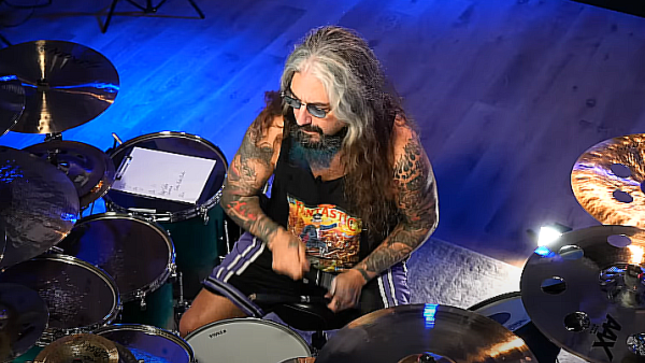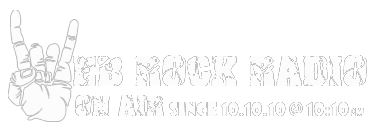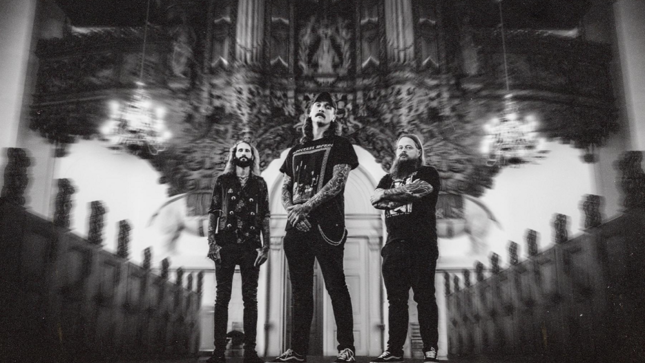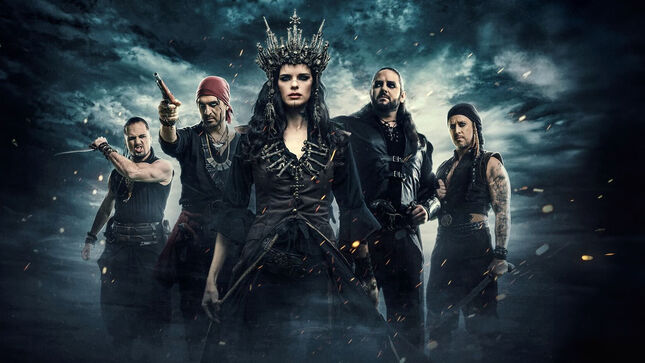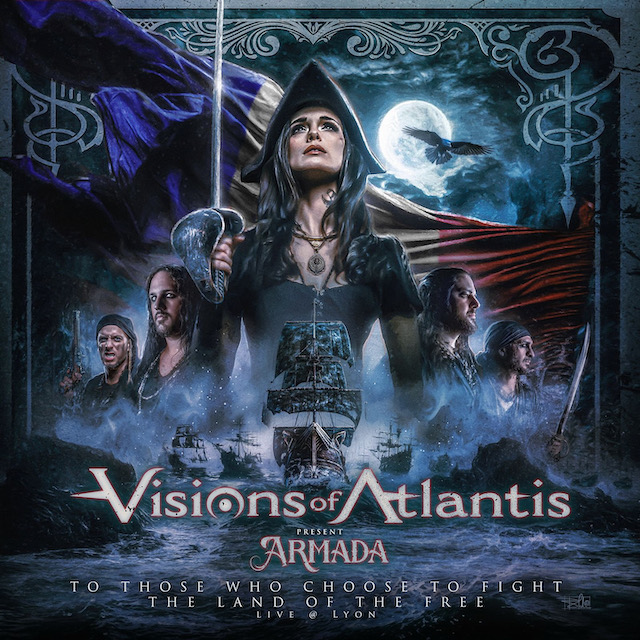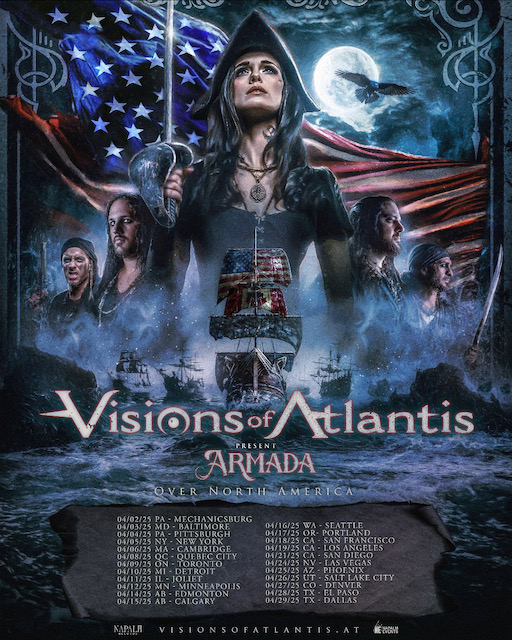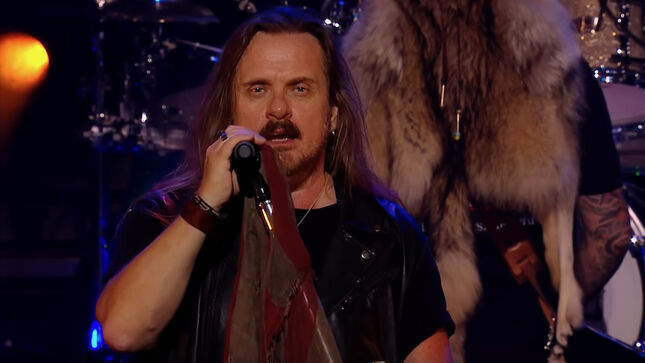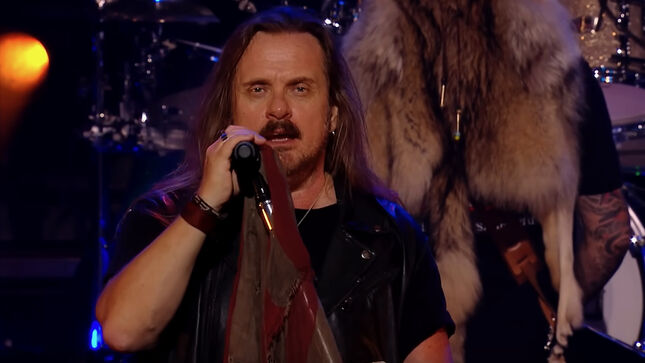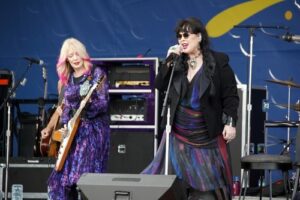
Feature Photo: Adam McCullough / Shutterstock.com
Heart originated in Seattle, Washington, and was officially formed in 1973. The group was initially led by sisters Ann and Nancy Wilson, whose talents as vocalists, songwriters, and instrumentalists became the driving force behind their success. Ann Wilson’s powerful voice and Nancy’s guitar virtuosity created a unique and enduring sound that blended elements of hard rock, folk, and even pop. The band’s classic lineup included Roger Fisher on guitar, Steve Fossen on bass, Michael Derosier on drums, and Howard Leese on guitar and keyboards, all contributing to their early iconic sound.
Heart’s journey in the music industry began with a move to Vancouver, British Columbia, where they recorded their debut album, Dreamboat Annie, in 1975 at Mushroom Studios. This album marked the start of their rise to fame, featuring hit singles such as “Magic Man” and “Crazy On You.” The record’s success in Canada quickly carried over to the United States, where it achieved multi-platinum status. The Wilson sisters’ chemistry and innovative musical approach became a template for female-fronted rock bands, establishing Heart as trailblazers in a male-dominated genre.
Over the years, Heart experienced several lineup changes, with original members like Roger Fisher and Steve Fossen departing in the late 1970s. Despite these shifts, the Wilson sisters maintained the band’s creative core, evolving their sound to reflect changing musical trends. By the 1980s, Heart had reinvented themselves with a polished pop-rock style, marked by chart-topping hits like “These Dreams,” “Alone,” and “What About Love.” Their self-titled 1985 album, Heart, became one of their most commercially successful efforts, showcasing their ability to adapt without losing their identity.
Throughout their career, Heart has released an impressive sixteen studio albums, each showcasing their versatility and artistic growth. From the folk-infused rock of Little Queen (1977) to the anthemic ballads of the 1980s and the reflective tracks of their later albums like Red Velvet Car (2010) and Beautiful Broken (2016), their discography reflects a remarkable range. Their most celebrated albums include Dreamboat Annie, Little Queen, Heart, and Bad Animals, all of which contributed to their standing as one of the most influential bands in rock history.
Heart’s accolades include induction into the Rock and Roll Hall of Fame in 2013, recognizing their significant impact on the music industry. They have also earned multiple Grammy nominations, an ASCAP Founders Award, and numerous gold and platinum certifications for their albums. Their music has transcended generations, with timeless hits like “Barracuda,” “Magic Man,” and “Alone” still resonating with audiences worldwide.
Beyond their musical achievements, Ann and Nancy Wilson have been trailblazers for women in rock, breaking barriers and inspiring countless female artists. They have also engaged in philanthropic endeavors, supporting causes like environmental conservation and advocacy for women’s rights. Their influence extends beyond the stage, making them role models both within and outside the music industry.
# 20 – “Dreamboat Annie” – Dreamboat Annie
“Dreamboat Annie,” the title track from Heart’s debut album Dreamboat Annie, captures a delicate interplay of acoustic serenity and lyrical introspection, establishing the band as purveyors of heartfelt and intimate storytelling. Written by Ann Wilson, Nancy Wilson, and producer Mike Flicker, this track encapsulates the wistful imagery of fleeting love and longing. Recorded in 1975 at Can-Base Studios in Vancouver, Canada, with Flicker at the helm, the song’s lush production and gentle rhythm reflect the dreamlike quality its title suggests.
Musically, “Dreamboat Annie” is built around an acoustic foundation, with Nancy Wilson’s intricate guitar work serving as its heart. The instrumentation, complemented by Ann Wilson’s ethereal vocal delivery, evokes a serene yet poignant atmosphere. The addition of Howard Leese on bass and Steve Fossen’s subtle rhythm contributions enhances the song’s layered texture. Its arrangement is minimal yet profoundly emotive, mirroring the introspective tone of the lyrics.
Lyrically, the song explores themes of love, transience, and the journey of self-discovery. Lines like “Heading out this morning, into the sun” suggest a metaphorical voyage, blending optimism with a sense of melancholy. This duality aligns with the broader narrative of the Dreamboat Annie album, which often juxtaposes vulnerability with resilience. The refrain’s soothing repetition echoes the oceanic imagery, reinforcing the dreamlike quality of the track. Comparatively, “Dreamboat Annie” sets a gentler tone than some of Heart’s later, more forceful rock anthems, offering a counterpoint to the electrifying energy found in songs like “Barracuda.”
Critically, the song—and the album it anchors—cemented Heart’s place in the 1970s rock scene. Its chart performance on the Billboard 200 established the band as both commercially viable and artistically distinct. Furthermore, the album’s platinum certification underscored Heart’s ability to balance artistic integrity with mainstream appeal. “Dreamboat Annie” may not have been released as a lead single, but its impact within the album’s context is undeniable, as it embodies the introspective and melodic essence of the band’s early sound.
As the opening track for this list, “Dreamboat Annie” exemplifies Heart’s ability to craft music that feels both intimate and timeless. The song’s gentle, ocean-inspired ambiance invites listeners into Heart’s world of poetic lyricism and masterful musicianship, setting the stage for the exploration of the band’s other iconic classics.
# 19 – “If Looks Could Kill” – Heart
“If Looks Could Kill,” a high-octane anthem from Heart’s 1985 self-titled album, epitomizes the band’s transition into the polished, hard rock sound of the 1980s. This track, written by songwriter Jack Conrad and lyricist Bob Garrett, embodies the dramatic flair of the era, blending soaring vocals with powerful guitar riffs and infectious hooks. The song was recorded at The Plant Studios in Sausalito, California, under the production of Ron Nevison, who played a key role in shaping Heart’s commercial resurgence during this period.
Musically, “If Looks Could Kill” is a showcase of Heart’s ability to deliver radio-friendly rock with an edge. Ann Wilson’s commanding vocal delivery propels the song, imbuing the lyrics with urgency and emotion. Nancy Wilson’s rhythm guitar anchors the track, complemented by Howard Leese’s dynamic lead guitar work. The song’s pulsating beat, driven by bassist Mark Andes and drummer Denny Carmassi, underscores its relentless energy. This driving instrumentation paired with the glossy production exemplifies the band’s successful adaptation to the glam-influenced rock style that dominated the mid-’80s.
Lyrically, the song plays with the metaphor of dangerous attraction, with lines like “If looks could kill, you’d be lying on the floor” capturing both the intensity and playfulness of its theme. The lyrics convey a sense of empowerment and self-assurance, which Ann Wilson channels into her fiery vocal performance. The song’s narrative aligns with the assertive spirit found in other tracks on the Heart album, such as “What About Love” and “Never,” while also presenting a unique perspective on romantic tension.
Critically, “If Looks Could Kill” was a strong entry in Heart’s mid-1980s catalog, contributing to the success of Heart, which topped the Billboard 200 and was eventually certified quintuple platinum. While the song wasn’t as dominant on the charts as some of the album’s singles, it remains a fan favorite for its unrelenting energy and dramatic presentation. Its inclusion in the band’s live performances further solidifies its place as one of their more memorable contributions to the 1980s rock landscape.
As the second entry on this list, “If Looks Could Kill” provides a striking contrast to the softer, acoustic textures of “Dreamboat Annie,” demonstrating Heart’s versatility and their ability to thrive in multiple eras of rock music. The song’s electrifying spirit continues to resonate with fans, proving that Heart’s fusion of technical prowess and emotive performance is as lethal as the lyrics suggest.
# 18 – “Alone” – Bad Animals
The power ballad “Alone,” featured on Heart’s 1987 album Bad Animals, marked a pinnacle of the band’s commercial success during the 1980s. Originally written by Billy Steinberg and Tom Kelly for their i-Ten project in 1983, Heart’s version transformed the song into a soaring anthem of love and longing. Recorded at Rumbo Recorders and Studio X, the track was produced by Ron Nevison, who had previously guided Heart through their 1985 self-titled comeback. The meticulous production and the Wilson sisters’ extraordinary performances elevated “Alone” into one of the most iconic songs of its era.
Ann Wilson’s vocal delivery on “Alone” is nothing short of mesmerizing. Her ability to convey vulnerability and raw power shines in every note, particularly in the chorus, where her voice crescendos into an impassioned plea. Complemented by Nancy Wilson’s acoustic guitar work and lush backing arrangements, the song exudes an emotional depth that resonates with listeners. The dramatic piano introduction and the climactic guitar solo further amplify the song’s emotive power, making it one of Heart’s most memorable recordings.
Lyrically, “Alone” encapsulates the torment of unspoken desire and the yearning for connection, with lines like “I never really cared until I met you” capturing the transformative power of love. The song’s narrative aligns with themes of vulnerability and empowerment, creating a universal appeal. In comparison to “Dreamboat Annie,” which opened this list with a gentle, introspective tone, “Alone” showcases Heart’s ability to channel grand emotions through their larger-than-life arrangements.
Critically and commercially, “Alone” became a defining moment for Heart. It topped the Billboard Hot 100 for three weeks in 1987, becoming the band’s biggest chart success. Its global appeal was evident as it charted highly in countries like Canada and the UK. The song solidified Heart’s place among the leading rock acts of the decade and demonstrated their adaptability in blending emotional storytelling with the bombastic production styles of the 1980s.
# 17 – “Fanatic” – Fanatic
The title track from Heart’s 2012 album Fanatic stands as a powerful testament to the band’s unrelenting energy and creative evolution over the decades. Recorded at Studio Litho and Benaroya Hall in Seattle, the song was co-produced by Ben Mink and Heart’s Ann and Nancy Wilson. It captures the raw intensity and emotion that have become synonymous with Heart’s music, offering a modern edge while remaining firmly rooted in their rock foundation.
“Fanatic” bursts forward with a gritty, driving riff, a hallmark of Nancy Wilson’s guitar work, which serves as the backbone of the track. Ann Wilson’s vocals soar with a ferocious passion, embodying the song’s themes of unyielding obsession and devotion. The propulsive rhythm section, led by Mink’s textured production, adds layers of depth and urgency to the track, creating an electrifying listening experience.
Lyrically, “Fanatic” delves into the consuming nature of desire and passion, painting a vivid picture of an all-encompassing fixation. Lines such as “Come on, come on, I’m your fanatic” encapsulate the intense, almost hypnotic pull described in the song. The lyrics echo the themes of vulnerability and empowerment explored in “Alone” while offering a raw, unfiltered perspective on obsession.
Critically, Fanatic marked a period of renewed vigor for Heart, with the album debuting at No. 24 on the Billboard 200. The track itself received praise for its unapologetically bold sound and Ann’s commanding vocal performance. Comparatively, “Fanatic” introduces a darker, more aggressive tone than the ethereal charm of “Dreamboat Annie,” reflecting Heart’s ability to adapt and experiment without losing their essence.
As the seventeenth song on this list, “Fanatic” exemplifies the Wilson sisters’ unwavering commitment to their craft. Its combination of searing instrumentation, evocative lyrics, and heartfelt delivery showcases why Heart continues to be a defining force in rock music.
# 16 – “Make Me” – Jupiters Darling
“Make Me,” featured on Heart’s 2004 album Jupiters Darling, is a compelling return to the band’s rock and roll roots, blending their signature 1970s acoustic style with the raw energy of powerful rock arrangements. Written by Ann and Nancy Wilson, alongside Craig Bartock, the song showcases Heart’s ability to evolve while maintaining the essence of their classic sound. Recorded at studios including Studio Litho and The Manor in Washington State, Jupiters Darling stands as a testament to the Wilson sisters’ artistry, with Nancy and Ann taking the reins in production alongside Bartock.
The song opens with an acoustic arrangement reminiscent of Heart’s early albums, marked by Nancy Wilson’s intricate fingerpicking and a 1970s folk-rock sensibility. However, “Make Me” soon explodes into a dynamic and electrifying rock arrangement, delivering a dramatic shift that amplifies the song’s emotional impact. Ann Wilson’s powerhouse vocals soar through this transition, complemented by a vibrant rhythm section and Bartock’s driving guitar riffs. The juxtaposition between the tender acoustic introduction and the full-throttle rock sections creates a sense of catharsis and urgency, underscoring the song’s thematic depth.
Lyrically, “Make Me” explores the transformative and sometimes turbulent nature of love, with a poetic intensity that mirrors its musical progression. Lines such as “Make me yours, make me whole” carry an emotional weight that is amplified by the music’s dynamic shifts, moving from quiet vulnerability to unabashed strength. The song’s evolution mirrors themes of personal empowerment, making it both an intimate and anthemic piece. Compared to the introspective melancholy of “Alone,” “Make Me” thrives in its ability to intertwine tenderness with raw energy.
Critics hailed Jupiters Darling as a return to Heart’s essence, and “Make Me” exemplifies why. The track balances the band’s acoustic sensibilities with their rock and roll ferocity, reminiscent of classics like “Barracuda” while charting new territory. Its dual nature—starting with acoustic introspection and soaring into a full-blown rock anthem—cements it as one of Heart’s most memorable compositions from this era.
As the sixteenth entry on this list, “Make Me” showcases Heart’s capacity to blend their acoustic roots with the unrelenting power of rock and roll. This dynamic and multifaceted piece highlights the Wilson sisters’ unparalleled ability to create music that feels both timeless and deeply personal.
# 15 – “Black on Black II” – Desire Walks On
“Black on Black II,” a fierce and brooding track from Heart’s 1993 album Desire Walks On, captures the band’s raw energy and evolving sound during the early ’90s. Crafted by Ann and Nancy Wilson alongside Sue Ennis, this track was produced by John Purdell and Duane Baron. Recorded at various locations including Capitol Studios in Hollywood, the song exemplifies Heart’s ability to merge their rock origins with the edgier tones of the decade, offering a darker, more intense musical experience.
Musically, “Black on Black II” thrives on its intricate layering and commanding arrangements. Opening with an ominous guitar riff, the track sets a haunting tone that builds into a powerful rock anthem. Nancy Wilson’s guitar work seamlessly blends with Howard Leese’s soaring leads, while Denny Carmassi’s thunderous drumming drives the song forward with an unrelenting pulse. Ann Wilson’s commanding vocals cut through the dense instrumentation, delivering a performance that balances ferocity and vulnerability. The production accentuates the song’s dark atmosphere, creating an immersive sonic experience that feels both intimate and expansive.
Lyrically, the song delves into themes of inner conflict and resilience, with evocative lines that resonate with listeners. Ann Wilson’s delivery of phrases like “I keep reaching for the future while my history lingers on” reflects the tension between moving forward and being weighed down by the past. The poetic imagery underscores the song’s emotional depth, making it a striking addition to the album. Unlike the introspective longing of “Alone” or the acoustic-meets-rock dynamics of “Make Me,” “Black on Black II” opts for a heavier, more aggressive approach, standing out as one of Heart’s boldest statements from the era.
Critics and fans alike have praised Desire Walks On for its versatility, and “Black on Black II” is a testament to the album’s ability to balance Heart’s rock roots with a modern edge. While it didn’t dominate the charts, the song remains a fan favorite, showcasing the Wilson sisters’ dedication to pushing creative boundaries. Its combination of emotional depth and musical intensity makes it a defining track of Heart’s 1990s catalog.
# 14 – “WTF” – Red Velvet Car
The sharp and unyielding “WTF” from Heart’s 2010 album Red Velvet Car captures the band’s knack for addressing raw emotions through compelling storytelling and hard-hitting musicality. Produced by Ben Mink and recorded at Henson Recording Studios in Los Angeles, the track stands out for its modern production layered with Heart’s signature rock sensibilities. With its potent lyrics and aggressive instrumentation, “WTF” solidifies itself as one of Heart’s boldest tracks of the 21st century.
Musically, “WTF” blends heavy guitar riffs with a driving rhythm section, creating a track that is as forceful as its title suggests. Nancy Wilson’s fierce guitar work complements Ann Wilson’s powerhouse vocal delivery, giving the song an unrelenting energy. The raw production, combined with dynamic shifts in tempo, underscores the emotional turmoil embedded within the lyrics. The song’s structure is tightly constructed, with sharp, biting verses that build into an explosive chorus, creating a sense of tension and release that keeps the listener engaged.
Lyrically, “WTF” explores themes of betrayal and frustration, with Ann Wilson delivering each line with a visceral intensity. Lines like “What the hell are you thinking? What the hell are you doing?” confront the subject of the song with unfiltered honesty. This confrontational tone is reminiscent of the defiance present in “Black on Black II,” yet “WTF” leans into a more contemporary rock aesthetic, blending angst with a refined sense of urgency. The song’s unflinching lyrics resonate deeply, serving as both a catharsis for the band and a rallying cry for listeners who have experienced similar turmoil.
Critically, Red Velvet Car was noted for its balance between Heart’s rock roots and modern influences, and “WTF” exemplifies this duality. The track received praise for its bold approach, with reviewers commending the Wilson sisters for channeling their frustrations into such a commanding performance. While songs like “Make Me” from Jupiters Darling carried a mix of acoustic warmth and rock energy, “WTF” strips away any softness to deliver a pure, unfiltered rock anthem.
# 13 – “Straight On” – Dog & Butterfly
“Straight On,” a highlight from Heart’s 1978 album Dog & Butterfly, showcases the band’s mastery of blending groove-laden rhythms with their trademark rock intensity. Produced by Mike Flicker, this track stands out for its funk-inspired bassline and infectious melody, demonstrating the band’s willingness to explore beyond the boundaries of traditional rock. Recorded during the sessions for Dog & Butterfly, “Straight On” reflects Heart’s evolution as musicians and their ability to incorporate diverse influences seamlessly into their sound.
Musically, “Straight On” features a prominent bass groove laid down by Steve Fossen, which serves as the backbone for the song’s rhythm-heavy arrangement. Nancy Wilson’s guitar work intertwines skillfully with Howard Leese’s contributions, creating a layered and dynamic instrumental palette. Ann Wilson’s soulful vocal performance adds depth to the track, with her commanding delivery enhancing the lyrical themes of self-determination and resilience. The song’s driving rhythm and infectious energy make it one of the more upbeat entries on the album, contrasting the introspective ballads like “Dreamboat Annie.”
Lyrically, “Straight On” conveys a message of personal empowerment and unwavering focus. The lyrics explore themes of commitment, whether in love or life’s pursuits, with lines like “Coming straight on for you” symbolizing relentless dedication. This theme ties well to other songs on this list, such as “If Looks Could Kill,” which also delves into strong emotional resolve, though “Straight On” employs a funkier and more lighthearted musical approach. The band’s clever use of rhythm and melody amplifies the song’s confidence and determination, making it a perennial favorite among fans.
Upon its release, “Straight On” received critical praise for its innovative blend of rock and funk influences, a departure from Heart’s earlier sound. Charting well on the Billboard Hot 100, the song cemented its place as one of Heart’s most memorable hits from the late 1970s. While Dog & Butterfly is celebrated for its balance of rock and acoustic tracks, “Straight On” leans into its upbeat energy, offering a refreshing counterpoint to the more introspective moments on the album.
# 12 – “Bébé le Strange” – Bébé le Strange
“Bébé le Strange,” the title track of Heart’s 1980 album Bébé le Strange, captures the band’s penchant for blending raw rock energy with haunting melodies. As the first album following guitarist Roger Fisher’s departure, this track marked a significant shift in Heart’s lineup and sound, with Nancy Wilson taking a more prominent role in guitar work. The song stands as a declaration of independence and resilience, reflecting the band’s ability to adapt and evolve without losing their core identity.
The recording sessions for Bébé le Strange showcased Heart’s commitment to innovation. Produced by Mike Flicker and recorded in Los Angeles, the track is driven by Nancy Wilson’s sharp guitar riffs and Ann Wilson’s powerhouse vocals. Howard Leese’s layered guitar contributions add depth, while Steve Fossen on bass and Michael Derosier on drums anchor the song with a steady, driving rhythm. The production captures the rawness of Heart’s rock roots while infusing it with a polished edge that underscores the song’s thematic intensity.
Lyrically, “Bébé le Strange” weaves a narrative of mystique and defiance, with its cryptic verses suggesting themes of manipulation and resistance. Lines like “You like your life in a freeform style” and “You let loose your magic, it amazed me for a while” highlight a power dynamic where enchantment gives way to clarity. The interplay between the hypnotic melody and assertive lyrics creates an almost cinematic tension, making the song resonate as both a personal and universal story.
Critics have praised “Bébé le Strange” for its unflinching confidence and its ability to push Heart’s sound into bolder territories. While it may not have reached the commercial heights of songs like “Alone” or “Straight On,” its significance lies in its role as a statement piece for the band during a transformative period. The song’s gritty tone and lyrical ambiguity align it closely with tracks like “Black on Black II,” both of which showcase Heart’s exploration of darker, more introspective themes.
# 11 – “How Can I Refuse” – Passionworks
“How Can I Refuse” roars to life as a declaration of love wrapped in the electric energy that only Heart could deliver in the early 1980s. Released on their 1983 album Passionworks, the song signaled a band navigating transitions while still holding onto their fiery essence. Co-written by Ann and Nancy Wilson alongside Sue Ennis, the track melds raw passion with a driving rock edge, making it a pivotal moment on an album that marked the band’s shift toward a more mainstream sound.
Recorded during the Passionworks sessions with producers Keith Olsen and Steve Perry (not the Journey frontman), the song captures the band’s experimentation with layered arrangements and polished production techniques. Ann Wilson’s soaring vocals, paired with Nancy Wilson’s dynamic guitar work, provide the backbone of the track. The lineup for this era also included bassist Mark Andes and drummer Denny Carmassi, whose contributions added depth and rhythmic intensity. Olsen’s production expertise brought a sheen to the band’s evolving sound, which would later culminate in their mid-80s commercial resurgence.
Lyrically, “How Can I Refuse” is a bold statement of vulnerability cloaked in determination. Lines such as “Whenever I see you, you tempt me, oh so clever / You really do know how to play” reveal a speaker caught in the allure of an irresistible connection. This theme of magnetic attraction is mirrored in the track’s robust instrumentation, where power chords and cascading melodies echo the emotional push and pull of the lyrics. The song’s title alone embodies an inner struggle against surrender, making it a compelling addition to Heart’s catalog.
Critically, “How Can I Refuse” was met with moderate acclaim, with many noting its seamless blend of Heart’s classic rock roots and the emerging pop sensibilities of the 1980s. The song achieved success on the charts, reaching the top of Billboard’s Mainstream Rock chart, cementing its place as a radio staple of the era. Compared to other songs on this list, such as “Dreamboat Annie,” which leans heavily on acoustic textures, “How Can I Refuse” thrives in its electrified intensity, demonstrating the band’s ability to adapt without losing their signature sound.
As part of Passionworks, “How Can I Refuse” stands out for its ability to channel the urgency and raw emotion that Heart had perfected in their earlier years while embracing the production styles of a new decade. Its energy, lyrical depth, and polished instrumentation make it an enduring favorite, a testament to the Wilson sisters’ skill in crafting songs that resonate across eras.
# 10 – “City’s Burning” – Private Audition
“City’s Burning” blazes its way through Private Audition as one of Heart’s most electrifying and urgent tracks, showcasing the band’s ability to balance raw intensity with thought-provoking lyricism. Released in 1982, this song delivers a gritty narrative steeped in socio-political commentary, wrapped in a hard rock framework that contrasts the more experimental elements of the album. Written by Ann Wilson, Nancy Wilson, and Sue Ennis, the track underscores the band’s ability to capture the chaos and uncertainty of the time.
Recorded at Kaye-Smith Studios in Seattle and produced by Connie and Howard Leese, “City’s Burning” captures Heart in a transitional phase. This period marked the departure of longtime drummer Michael Derosier and bassist Steve Fossen, ushering in new members who would bring different influences to the group’s sound. The recording process, defined by its raw edges and deliberate intensity, allowed Ann Wilson’s powerhouse vocals to take center stage while Nancy Wilson’s fiery guitar riffs and Leese’s layered arrangements added depth to the sonic landscape.
Thematically, “City’s Burning” presents a vivid portrayal of urban unrest and societal upheaval, capturing the unease of an era marked by political tensions and economic struggles. Lines like “The sky is black, the streets are red” evoke imagery of destruction, while Ann’s vocal delivery oscillates between mournful reflection and fierce defiance. This emotional spectrum is reinforced by the instrumentation, which juxtaposes blistering guitar solos with a driving rhythm section, creating a sense of urgency and momentum.
Critics have highlighted “City’s Burning” as a standout on Private Audition, commending its unflinching lyrics and Heart’s ability to channel anger and frustration into a cohesive rock anthem. While the album as a whole received mixed reviews for its divergence from the band’s earlier sound, this track stood out for its focused intensity and the way it bridged the gap between Heart’s hard rock roots and their evolving aesthetic. Compared to other songs on this list, such as “Make Me,” which balances acoustic and rock elements, “City’s Burning” leans heavily into its hard rock core, making it one of the band’s most forceful statements.
Despite not achieving significant commercial success, “City’s Burning” remains a fan favorite for its uncompromising message and powerful execution. It exemplifies Heart’s willingness to tackle heavy themes without sacrificing the musicality that defines their best work. Within the context of this list, the track’s fiery energy and vivid storytelling further cement its place as a classic Heart anthem, illustrating the band’s ability to transform societal turmoil into enduring rock artistry.
# 9 – “These Dreams” – Heart
With its ethereal melody and poignant lyrics, “These Dreams” introduced a tender new facet to Heart’s dynamic range. Featured on their 1985 self-titled album, the song stood out as a defining moment in the band’s career, marking the first time Nancy Wilson took the lead vocal role on a Heart single. Written by Bernie Taupin and Martin Page, the track’s introspective narrative about longing and escapism resonated with listeners worldwide, showcasing the band’s ability to evolve stylistically without losing their emotional core.
The recording, helmed by producer Ron Nevison at Lighthouse Studios in Los Angeles, is a masterclass in blending lush 1980s pop production with Heart’s distinct musical identity. Nancy’s vocals, layered with vulnerability and grace, perfectly complement the track’s dreamy instrumentation, which is rich with synthesizers, clean guitar lines, and a steady, almost hypnotic rhythm. The resulting soundscape creates a perfect match for the song’s lyrical exploration of surreal, almost otherworldly experiences.
The words, “Every second of the night, I live another life,” encapsulate the track’s emotional weight, conjuring a sense of refuge found in dreams during times of turmoil. This introspection sets “These Dreams” apart from Heart’s typically bold and rock-driven tracks like “City’s Burning,” offering listeners a quieter, more reflective moment within their repertoire. The song’s themes of escapism and emotional sanctuary have made it a timeless anthem for anyone seeking solace in the midst of life’s chaos.
# 8 – “Dog & Butterfly” – Dog & Butterfly
With its poetic storytelling and delicate instrumentation, “Dog & Butterfly” is one of Heart’s most poignant and enduring compositions. The title track from their 1978 album Dog & Butterfly, the song reflects the band’s ability to seamlessly blend folk influences with their rock foundation. Written by Ann and Nancy Wilson alongside band member Sue Ennis, the song draws inspiration from an image of a dog futilely chasing a butterfly, a metaphor for the bittersweet and often elusive nature of life’s aspirations.
The track was recorded at Sea-West Studios in Seattle and Kaye-Smith Studios in nearby Bothell, Washington. Co-produced by Mike Flicker and Heart, the song features Nancy Wilson’s intricate acoustic guitar work, which creates a wistful, pastoral atmosphere. Ann Wilson’s emotive vocal performance captures the song’s duality of hope and disappointment, with her soaring delivery reflecting both the joy and melancholy present in the lyrics. The instrumentation remains relatively understated, allowing the melody and narrative to take center stage while offering a stark contrast to the more rock-driven tracks on the album, such as “Straight On.”
Lyrically, “Dog & Butterfly” is rich with imagery, painting a vivid picture of the highs and lows of life. Lines like, “Dog and butterfly, up in the air he likes to fly,” evoke a sense of innocence and wonder, while the underlying themes explore resilience in the face of adversity. This duality echoes the thematic range found in other tracks on this list, such as the tender escapism of “These Dreams” or the introspective weight of “City’s Burning.” The song invites listeners to reflect on their own pursuits, celebrating both the triumphs and the struggles along the way.
Although not a massive chart success, “Dog & Butterfly” has become a fan favorite, often highlighted as one of Heart’s most introspective and beautifully crafted songs. It is a testament to their versatility and commitment to authentic storytelling. In the context of this list, the track exemplifies the band’s ability to infuse their music with profound emotional depth, standing as a gentle yet powerful reminder of the universal human experience.
# 7 – “Kick It Out” – Little Queen
Energized by an unapologetic attitude and raw instrumentation, “Kick It Out” embodies Heart’s fierce commitment to rock and roll. Featured on their 1977 album Little Queen, the track is a blistering anthem that captures the rebellious spirit of the band during this pivotal period in their career. Written by Ann Wilson, the song combines a frenetic pace with lyrics that celebrate breaking free of societal constraints and embracing individuality.
The recording sessions for Little Queen took place at Kaye-Smith Studios in Seattle, with production helmed by Mike Flicker. Nancy Wilson’s fiery rhythm guitar riffs set the tone, driving the song forward with unrelenting energy. Meanwhile, Steve Fossen on bass and Michael Derosier on drums anchor the track with a tight, pulsating rhythm, creating the foundation for Ann Wilson’s powerful vocal delivery. Her ability to move effortlessly between commanding intensity and melodic finesse elevates the song to an anthem of defiance. Compared to the reflective elegance of “Dog & Butterfly” or the emotive storytelling of “These Dreams,” “Kick It Out” is a no-holds-barred showcase of Heart’s rock credentials.
Lyrically, the song revolves around themes of freedom and self-expression, encapsulated in lines like, “Everybody knows the scene is dead, but it comes back to life in your head.” The words resonate with the band’s ethos of challenging the status quo and empowering their audience to follow their own paths. This theme aligns with other tracks on this list, such as “City’s Burning,” which critiques societal decay but with a more introspective approach. In contrast, “Kick It Out” thrives on its straightforward, rebellious energy, making it a unique addition to Heart’s catalog.
# 6 – “Heartless” – Magazine
With its searing vocals and brooding narrative, “Heartless” encapsulates Heart’s ability to fuse raw emotion with commanding instrumentation. Released in 1978 on the album Magazine, the song is a bold and unapologetic exploration of betrayal, capturing the pain of deceit through Ann Wilson’s soaring vocal performance. Written by Ann and Nancy Wilson, the track delivers a dark and dramatic energy, setting it apart from the more upbeat rebellion of “Kick It Out” or the introspective beauty of “Dog & Butterfly.”
The recording sessions for Magazine took place in Seattle, with Mike Flicker as producer, further solidifying the partnership that shaped much of Heart’s early work. The track features Nancy Wilson’s intricate guitar work, which alternates between plaintive melodies and sharp, biting riffs that mirror the song’s themes of heartbreak and confrontation. Michael Derosier’s drum patterns and Steve Fossen’s bass lines add a steady intensity, amplifying the song’s sense of urgency. Compared to other songs in this list, such as the reflective “These Dreams,” “Heartless” carries a rawer, more visceral edge, making it a quintessential example of Heart’s rock prowess.
The song tells a tale of betrayal and emotional manipulation, with lines like, “You’ve got a way of making me feel so sorry.” The biting accusations and deeply personal tone set it apart, resonating with anyone who has experienced the sting of deceit. The title itself—”Heartless”—speaks to the cold and unfeeling nature of the betrayal, reinforcing the song’s thematic depth. Its emotional narrative ties it closely to tracks like “City’s Burning,” but where that song focuses on societal critique, “Heartless” delves into the personal, creating an intimate and relatable experience.
# 5 – “Little Queen” – Little Queen
A tapestry of acoustic finesse and electric energy, “Little Queen” exemplifies Heart’s knack for crafting vivid musical narratives. The song’s blues-infused rock groove pairs seamlessly with Ann Wilson’s commanding vocals, delivering a story of charm and resilience that reflects the album’s free-spirited themes. The title track pulsates with a raw energy, driven by Roger Fisher’s distinctive electric guitar work, which contrasts with the delicate fingerpicking that opens the track—commonly attributed to Nancy Wilson.
Recorded at Kaye-Smith Studios in Seattle and Village Recorders in Los Angeles, Little Queen emerged during a turbulent period in the band’s history, as they transitioned from their debut Dreamboat Annie to broader recognition. The production, helmed by Mike Flicker, highlights Heart’s intricate arrangements, with each instrumental layer adding depth to the track. Ann Wilson’s vocals soar, lending a sense of urgency to lyrics that explore themes of individuality and allure.
Compared to “Kick It Out,” another track on the same album, “Little Queen” demonstrates a subtler, more refined approach to Heart’s rock sound. Where “Kick It Out” is an all-out burst of energy, “Little Queen” balances its intensity with moments of quiet intricacy, showcasing the band’s range. The lyric, “You’re the little queen of the underground,” reflects the song’s celebration of those who thrive on their own terms, reinforcing the album’s overarching themes of rebellion and empowerment.
# 4 – “Even It Up” – Bébé le Strange
Released in 1980, the song captures a blues-infused rock edge, underscoring Ann Wilson’s powerhouse vocals and Nancy Wilson’s electrifying guitar work. The track’s bold, unrelenting attitude fits seamlessly within the album’s rebellious tone, asserting its place as one of Heart’s most dynamic offerings.
Recorded at Sea-West Studios in Seattle, Washington, Bébé le Strange marked Heart’s first album without founding guitarist Roger Fisher, yet “Even It Up” demonstrates the band’s resilience and adaptability. Howard Leese’s robust rhythm guitar and Nancy Wilson’s searing lead riffs take center stage alongside Ann Wilson’s commanding vocal delivery. Adding an extra layer of grit to the track, the Tower of Power horn section delivers a vibrant punch, infusing the song with a bold, brass-driven vitality that enhances its defiant lyrics. Produced by Mike Flicker and the band, the track embodies Heart’s distinctive blend of hard rock and blues influences, while standing out for its aggressive and unapologetic energy.
Lyrically, “Even It Up” presents a tale of frustration and empowerment, as Ann Wilson’s voice serves as a battle cry for fairness in a relationship. With lines such as “You’ve got me coming and going / And I can’t stand it,” the song delivers a message of defiance and self-respect, themes that resonate throughout Heart’s catalog. Comparatively, its fiery tone contrasts with the ethereal storytelling of “Dog & Butterfly” and the introspective vulnerability of “These Dreams,” showcasing Heart’s ability to navigate a broad emotional and stylistic spectrum. Musically, the song’s driving beat and sharp guitar work place it firmly within the hard rock territory explored in tracks like “Barracuda,” but its horn arrangement adds a unique twist that sets it apart.
# 3 – “Baracuda” – Little Queen
“Barracuda,” from Heart’s Little Queen, ignites with unrelenting energy, combining blistering guitar riffs with Ann Wilson’s fierce vocal delivery to craft a song as confrontational as its namesake. Released in 1977, this track channels a raw and defiant spirit, reflecting the band’s frustration with the music industry’s exploitative tendencies. Its driving rhythm and searing lead guitar create a sonic landscape that is both aggressive and captivating, solidifying its place as one of Heart’s most celebrated and enduring works.
Recorded at Kaye-Smith Studios in Seattle, Washington, and produced by Mike Flicker, “Barracuda” stands out for its intricately layered instrumentation. Nancy Wilson’s commanding acoustic rhythm guitar sets the foundation, while Roger Fisher’s electrifying lead guitar and Howard Leese’s masterful solos propel the track’s intensity. Steve Fossen’s pulsating bass line and Michael Derosier’s thunderous drumming provide a powerful backbone, making the song a textbook example of Heart’s ability to deliver hard rock at its finest. The synergy between the Wilson sisters and their bandmates is palpable, each element working in tandem to amplify the track’s impact.
Lyrically, “Barracuda” serves as a biting critique of deceit and manipulation, with lines like “If the real thing don’t do the trick / You better make up something quick” aimed squarely at industry figures who had disrespected the band. Ann Wilson’s voice brims with righteous fury, her delivery embodying both strength and indignation. When compared to “Even It Up,” another fiercely defiant track in Heart’s catalog, “Barracuda” takes a more direct and confrontational approach, using its lyrics to expose rather than merely assert. Similarly, the song contrasts with the introspective nature of “Dog & Butterfly,” highlighting the band’s remarkable versatility in thematic exploration.
As a commercial and critical triumph, “Barracuda” charted within the Top 40 of the Billboard Hot 100 and became an anthem of female empowerment in rock. Its fiery sound and unapologetic attitude continue to resonate, serving as a touchstone for both Heart’s career and the broader genre of hard rock
# 2 – “Crazy On You” – Dreamboat Annie
“Crazy On You” bursts forth with a blend of acoustic precision and electric ferocity, encapsulating the duality that defines Heart’s Dreamboat Annie. Released in 1976, this song captures the spirit of its era while delivering an urgent and personal message about love and liberation. With its genre-defying fusion of folk-inspired melodies and hard rock intensity, “Crazy On You” reflects the Wilson sisters’ exceptional ability to merge technical prowess with deeply emotional storytelling.
Recorded at Can-Base Studios and Mushroom Studios in Vancouver, British Columbia, the track was produced by Mike Flicker, whose crisp production emphasized both the acoustic and electric elements of Heart’s sound. Nancy Wilson’s intricate acoustic guitar introduction, “Silver Wheels,” showcases her remarkable fingerpicking technique, setting a mesmerizing tone before Roger Fisher’s electrifying lead guitar plunges the song into rock territory. Ann Wilson’s commanding vocals deliver both vulnerability and passion, supported by Steve Fossen’s steady bass and Michael Derosier’s driving drum patterns. Together, these elements create a dynamic and cohesive sound that exemplifies Heart’s groundbreaking approach to rock music.
Lyrically, “Crazy On You” explores themes of love as a means of escape from a world fraught with tension and uncertainty. Ann Wilson’s impassioned delivery of lines like “Let me go crazy on you” conveys a sense of urgency and emotional release, resonating deeply with audiences. Compared to “Barracuda,” which channels righteous anger into a hard-hitting critique, “Crazy On You” leans into its tender yet powerful plea for connection. This juxtaposition within Heart’s catalog highlights the band’s versatility in navigating both raw intensity and heartfelt vulnerability.
# 1 – “Magic Man” – Dreamboat Annie
Opening with Roger Fisher’s evocative, cascading guitar solo, “Magic Man” instantly sets the stage for its narrative of youthful infatuation and rebellion. Featured on Heart’s seminal debut album Dreamboat Annie, the song’s intricate arrangement seamlessly intertwines Ann Wilson’s compelling vocals with Howard Leese’s haunting synthesizer melodies, creating a sound that is both progressive and rock-driven. Recorded in 1975 at Mushroom Studios in Vancouver, Canada, and produced by Mike Flicker, the track epitomizes the creative ambition that propelled Heart into the spotlight.
The autobiographical lyrics, penned by Ann and Nancy Wilson, recount Ann’s relationship with the band’s manager, Michael Fisher. The story explores the tension between personal desires and familial expectations, as the narrator defends her decision to follow her “magic man.” Lines such as “Try to understand, try to understand / Try, try, try to understand” encapsulate the emotional push and pull at the heart of the song. This personal narrative connects it to other heartfelt tracks on this list, such as “Crazy On You,” which also juxtaposes intimacy with intense musicality.
Commercially, “Magic Man” became Heart’s first Top 10 hit on the Billboard Hot 100, reaching No. 9 in 1976, cementing the band’s status as a powerhouse in the burgeoning classic rock era. Critically, the song is celebrated for its dynamic structure, building from introspective verses to a commanding instrumental break that highlights Fisher’s remarkable lead guitar work and Leese’s Minimoog synth accents. As the closing song on this list of Heart’s most classic tracks, “Magic Man” represents not just the band’s emergence, but their ability to balance raw emotion and technical prowess, leaving an enduring legacy in rock history.
Check out our fantastic and entertaining Heart articles, detailing in-depth the band’s albums, songs, band members, and more…all on ClassicRockHistory.com
Read More: Classic Rock Bands List And Directory
20 Most Classic Heart Songs article published on Classic RockHistory.com© 2025

